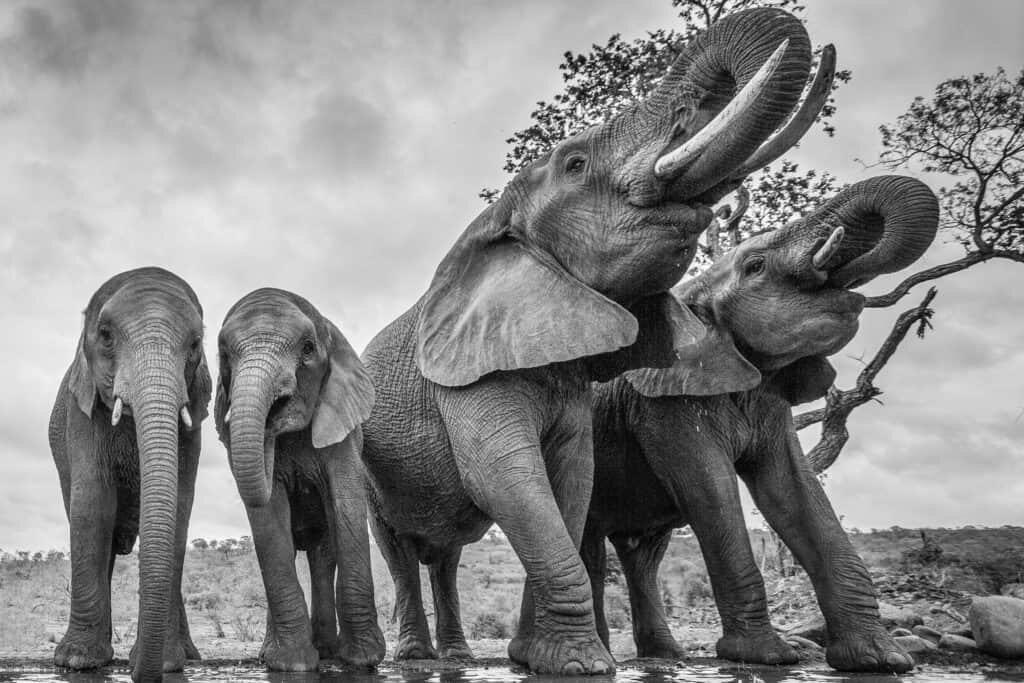
Every now and then I see the work of a photographer and am blown away.
That happened when I saw an image of two buffalo drinking at a waterhole in South Africa under the stars. A moment so special that it would’ve taken so much skill and patience for the photographer that I couldn’t resist getting in touch.
The photographer behind the image is Alison Langevad from Australia. It’s evident once you start looking through her website that Alison has a flair for capturing wildlife in their most natural, fleeting moments.
I’m really excited to share an interview with Alison chatting all about her experiences, gear and where you can go to capture your own images of wildlife.
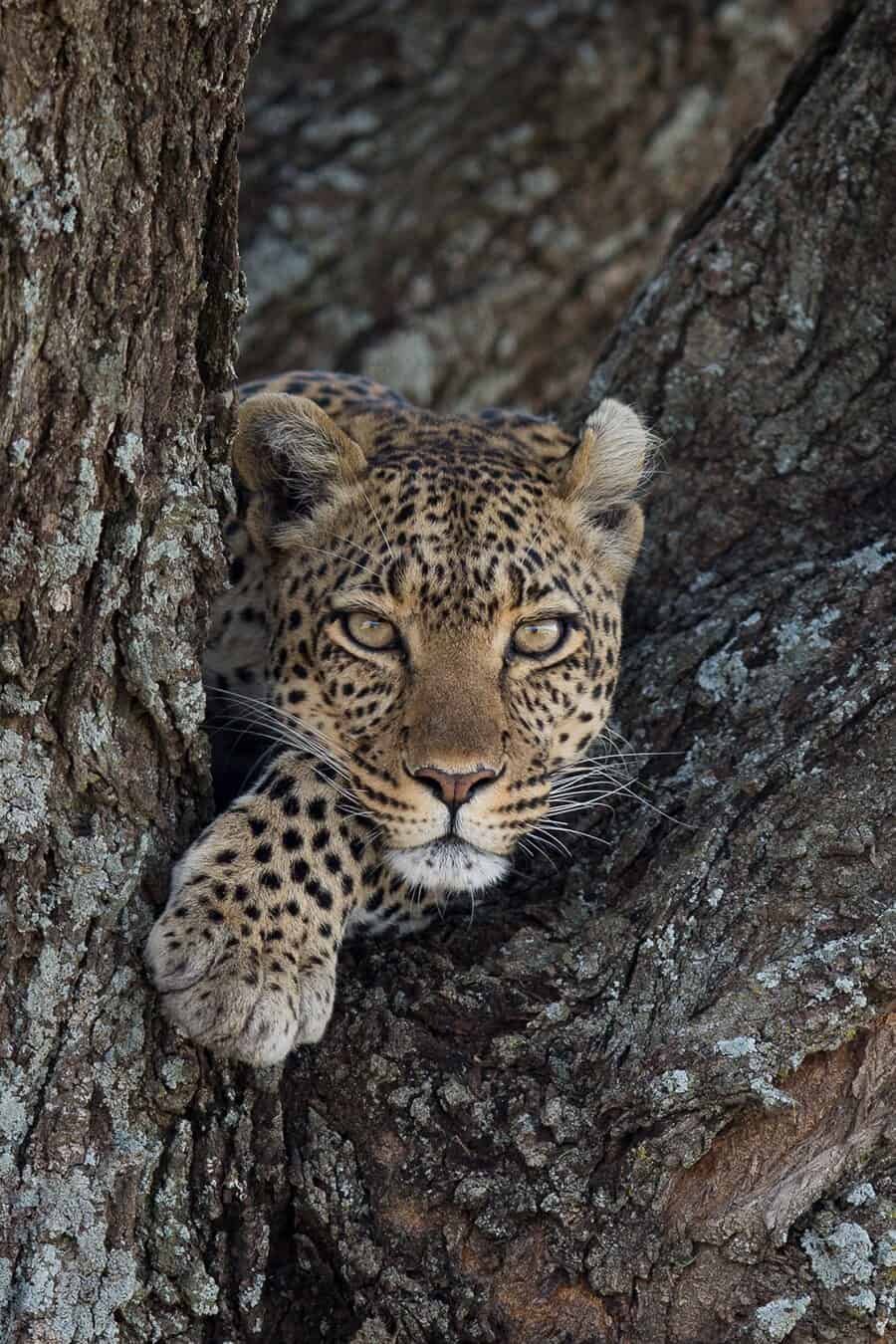
Tell us a little about yourself and why you like photographing wildlife
Home for me is the beautiful Whitsundays in Queensland, Australia. With the Great Barrier Reef at my doorstep, I live in a truly magnificent part of the world. Many hats hang in my home of which I slip between with ease. I am a wife, a mother of two, a screen printer, a personal trainer and group fitness instructor, all of which I am passionate about. To add to that I am also a sports and wildlife photographer. Wildlife photography really ignites my soul. It is a way for me to share incredible experiences with others and show them what they might not ever experience.
What got you started in Wildlife Photography?
I embarked on my photographic journey about three years ago. The seed was sown in 1995 when an opportunity arose for my husband and I to spend time in Africa. Having always been mad about animals it seemed a natural fit for me. We spent a lot of time in Kenya, Tanzania, Zimbabwe and Uganda. When we ventured into Zaire (now the Democratic Republic of the Congo) to spend time with the gorillas, we got to experience something incredible. That was the beginning of my passion for Africa and its wildlife. My husband and I return regularly and my love of both Africa and wildlife grows from trip to trip.
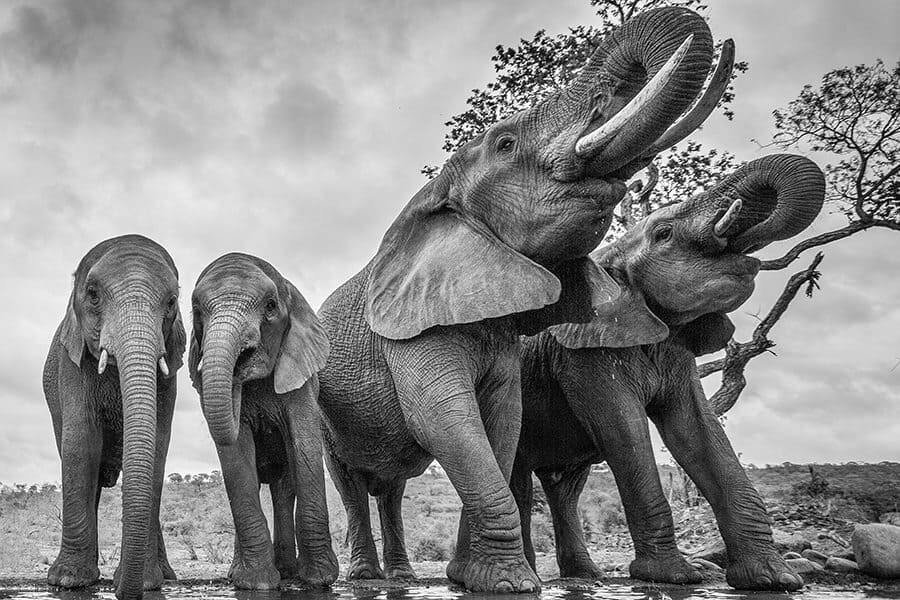
What gear do you recommend for photographing wildlife?
I use a Canon 5d mark3 (and have another for a back-up) and usually shoot with a Canon 400mm 2.8 lens. I am a Canon shooter only because my Dad was and it seemed natural to follow him. The quality of the 400mm 2.8 lens is extraordinary and working with a fixed lens instead of zoom has been my own personal challenge. I rarely use an extender as I prefer to crop rather than loose a stop or two of light. I also carry a 70-200mm 2.8 for animal portraits and a 16-35mm 2.8 to set the scene. In my opinion the differences between most top camera brands are so slight that it is the heart of the photographer and how they portray things that matters. We all see things differently and it is up to the photographer to make the most of this. If you are just embarking on wildlife photography, the old saying stands true of just make the most of what gear you have. Seek great light and be creative in your approach. If you are ready to get a little more serious, a zoom lens does make life easier. A reach of up to 500mm is great. I began with a sigma lens 150-500mm before I splurged on my canon 400mm 2.8. Working on improving editing skills can help a lot. I manage and edit my files in Light Room with just the occasional bit of Photoshop. There are lots of great editing choices out there so explore them and be organised in naming and cataloguing images.
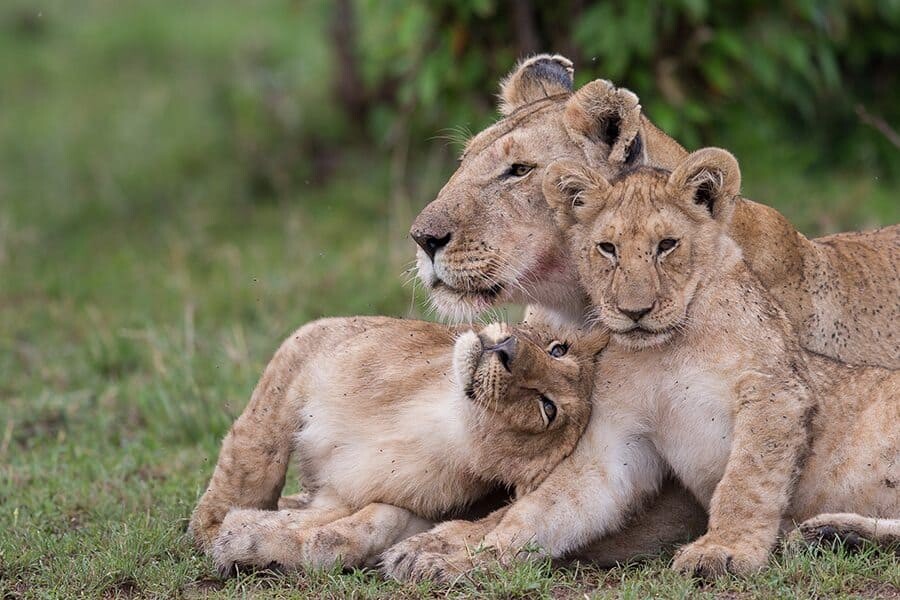
What do you believe makes your images successful?
Being a new-comer to photography I am not the most technically proficient yet but I am very emotive and bring that into my work. I look closely for moments like a fleeting tender touch or expression that is character revealing. I wait for unique situations to unfold. My travel itineraries are rarely rushed.
Is there one animal you’ll happily photograph again and again?
African wildlife is definitely a favourite of mine. I am a sucker for big cats and hyenas. I also enjoy the chase of the elusive animals like the bold honey badger, the nocturnal aardvark, endangered pangolins and shy serval cats just to name a few.
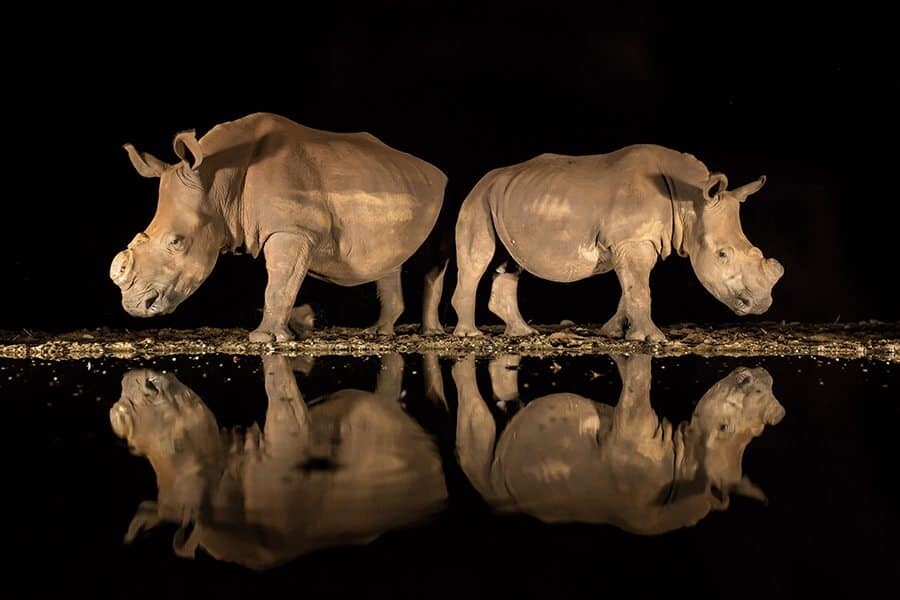
How long do you typically wait for your shots?
When shooting wildlife, you do need a certain amount of patience. For some-one who is continually active and usually unstoppable, I can actually sit for hours watching wildlife waiting for the shot I want. Knowing a little about their habits and habitats makes it easier. For me, anticipation for what may happen is half the thrill. Images of what actually unfolds makes up the rest. Hours and hours can pass while I happily wait for a leopard to wake or lion to look my way. Being in the African bush for me is an experience like no other and is never time wasted
The shot of buffalo at the waterhole under the stars is incredible. Did this take long to happen?
That shot was taken at Zimanga Private Game Reserve (KwaZulu Natal, South Africa) in the overnight hide. It has taken me three return trips to get the collection of photographs I wanted. Every time I have returned to this reserve my experiences have been different. (On my last trip I discovered you cannot predict the weather and found I was now shooting dehorned rhino.) Custom designed for large mammal photography, the hide is complete with all the comforts of home. A session there goes for about 16 hours. I use two cameras on tripods, one with a 16-35 mm 2.8 lens for wide angle and star shots, the other a 70-200mm 2.8 for animal portraits. It has a bank of lights on either side that I control from within the hide to light paint and illuminate the animals. A great range of animals can visit throughout the night and dawn such as buffalo, elephant, zebra, rhino and if you are truly lucky leopard or lion. It’s still luck of the draw what animals show up. I only have one photographic regret so far and that was when I was spoilt with a night visit from a leopard my camera gear wasn’t ready. It still feels like a once in a lifetime opportunity missed.
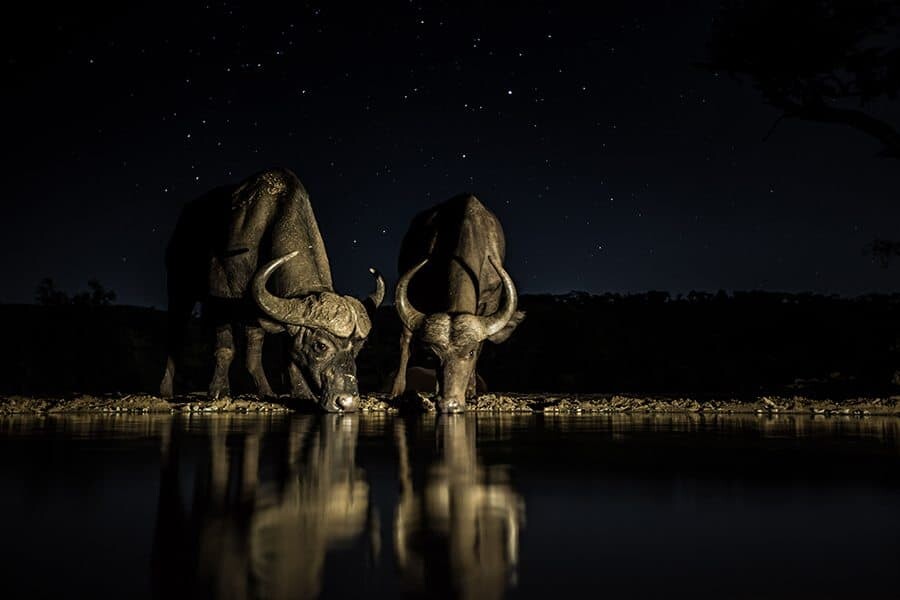
Was there ever a moment you thought you were too close to the action?
You always have moments where you wonder what you are doing but they are fleeting. A big cat will look you directly in the eye as it brushes your vehicle and you’ll shiver, or an ellie will toy with you and you’ll notice just how huge they are! The answer is always to know and trust your guide or driver and have confidence in their ability. When charged by a rhino. I’ve been known to shout “wait…the photo!” as others whipped me away to safety.
Do you believe wildlife photography has an effect on conservation?
I believe wildlife photography plays a huge part in conservation. People can’t be passionate about things they don’t know. As photographers’ we can show them what matters and reveal injustices. Social media is a great platform for us to use in rallying support and driving others to action. Because of this it is important to be honest and real in our portrayal of wildlife. I spend time at specific photographic reserves because they are often run by conservationists trying to make a difference. I enjoy using them, knowing my dollar does a little bit of good.
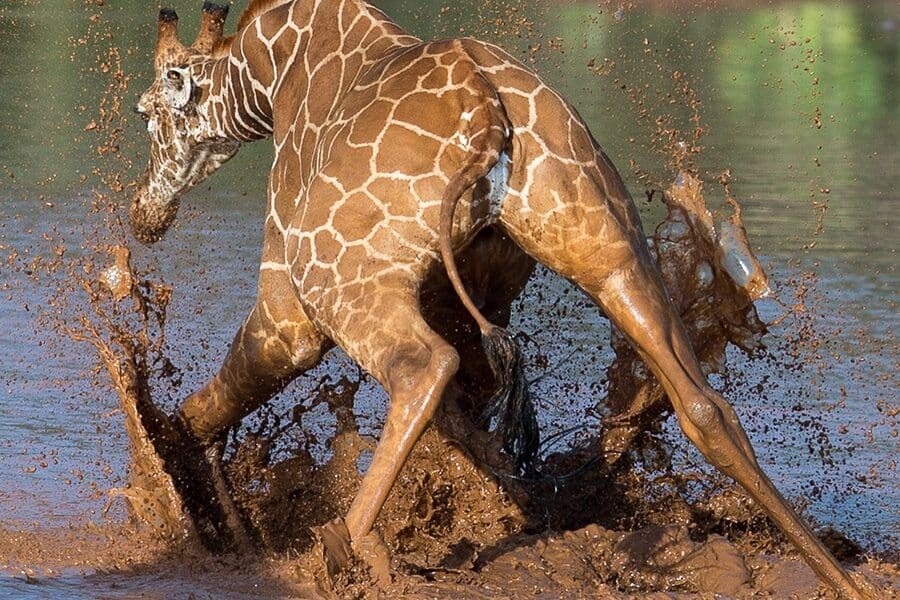
Are there any particular experiences you would recommend?
I believe variety is the spice of life. With wildlife photography mix it up. Enjoy the abundant countries like Africa, South America or Sri Lanka but also look as closely as your own back yard. Try a hide, carry your camera on a hike, shoot in all weather, both day and night. You are only limited by your imagination so try all sorts of techniques combined with wildlife.
Is there one specific destination you could suggest photographers visit?
I’m mad keen on Africa because of the abundance of wildlife and the ease of which you can photograph it. Kenya is fast becoming my favourite country and I thoroughly recommend it. It has amazing wildlife that is quite accessible from vehicles, stunning and diverse landscapes and great tribes that have held onto traditions such as the Maasai and Samburu tribes. When visiting Africa for the first time, keep in mind it is the second largest continent. If you try and visit too many countries in one go you will spend so much time in transit. Consider picking a couple of countries in close proximity and explore them in earnest.
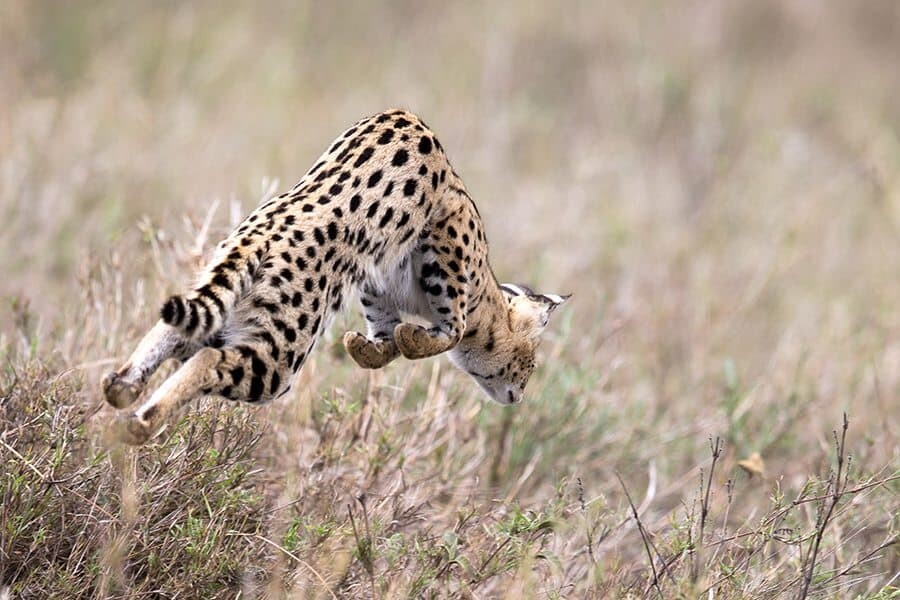
Does wildlife photography have an impact on local community?
Wildlife photography can have a huge impact on local communities. It has the power to bring income to those in need but can also destructive if we are not sensitive in our approach and capable in management. We need to be careful as photographers not to influence what we are trying to portray. Our work needs authenticity to be successful and I feel we have an obligation to be a positive influence on community development.
To view more of Alison’s work you can find her at the following links:
Website – www.alisonlangevad.com.au
Facebook – Alison Langevad Photography
Instagram – @alisonlangevadphotography
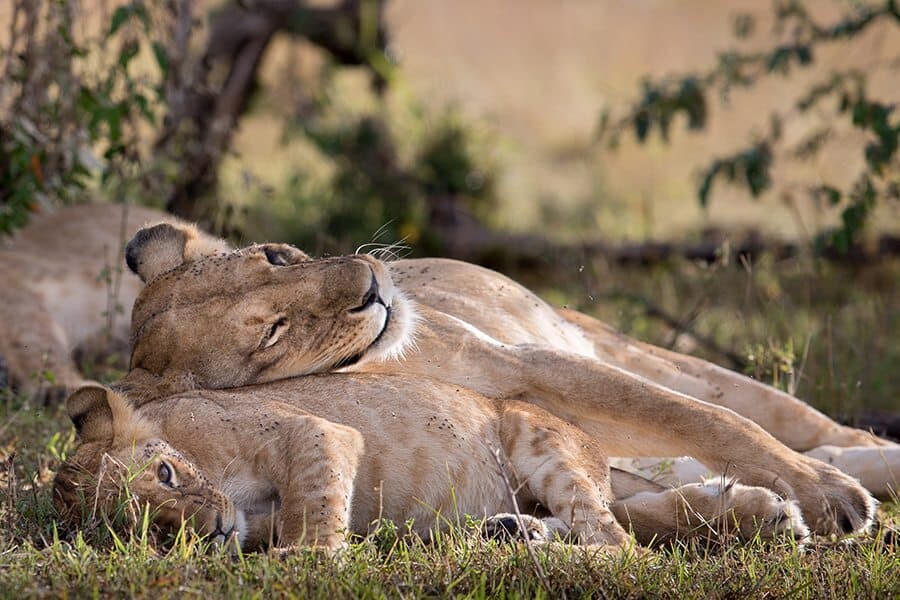

Hello! I’m the founder and photographer behind The Wandering Lens.
With 19+yrs experience as a professional travel and landscape photographer, all advice found on this site is from my personal experience, or that of contributors, on the road. I hope it’s useful for your own travels and would love to hear in the comments about your trips and experiences around the world.

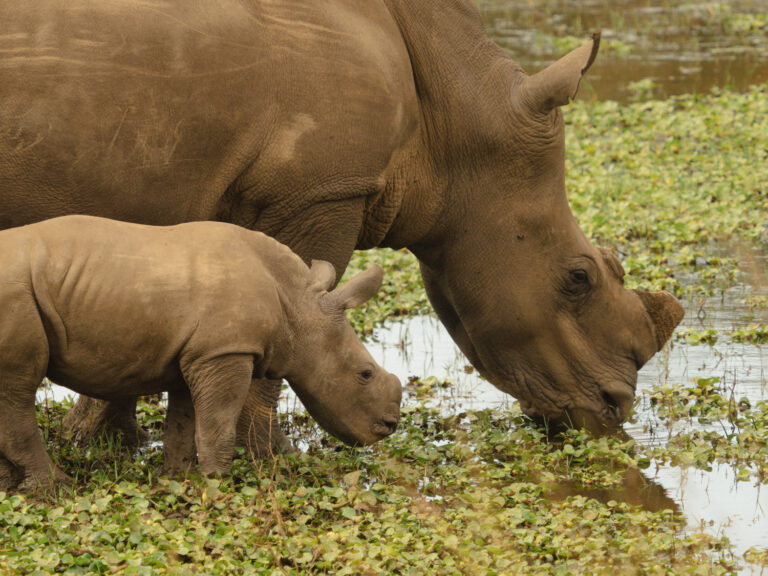
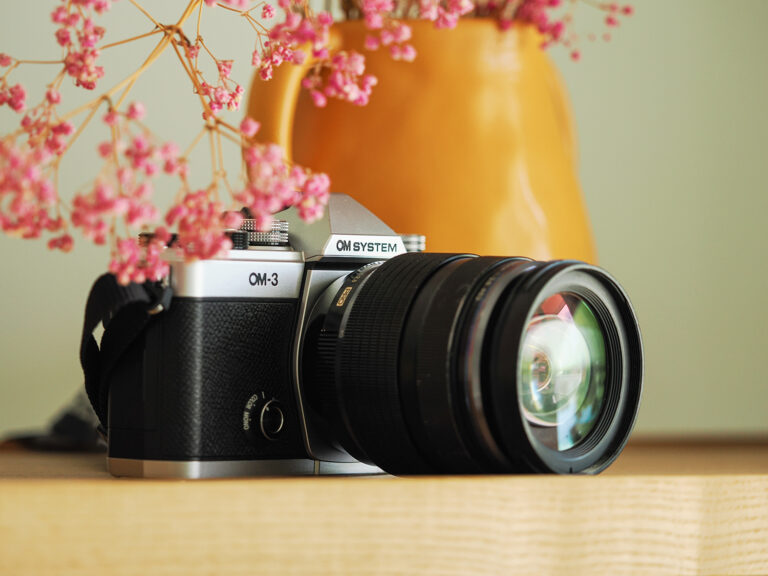
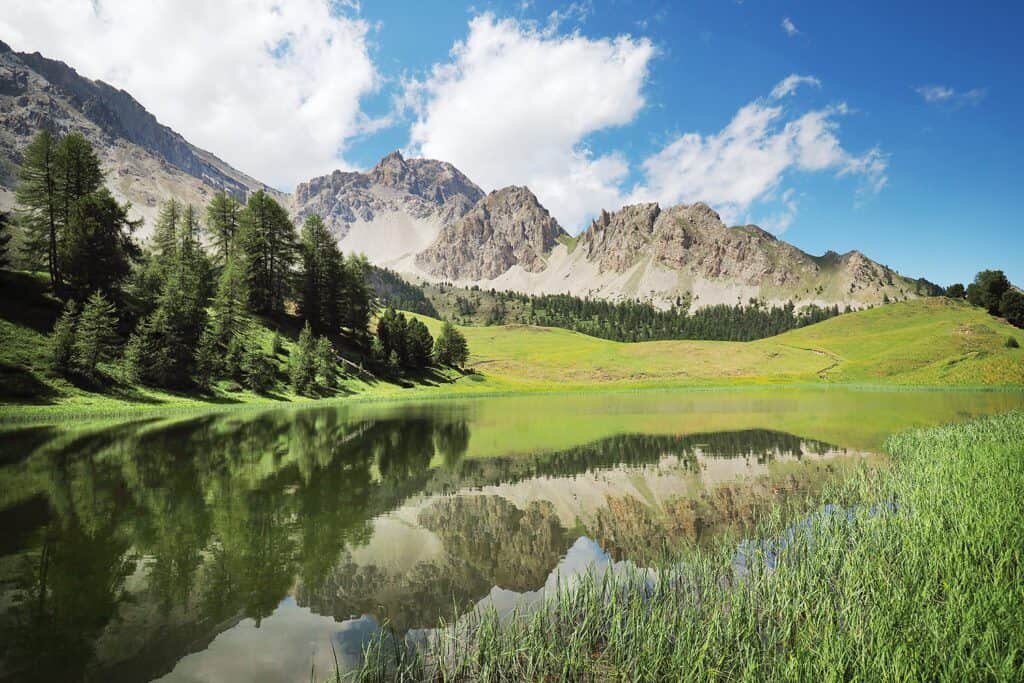
Blog Comments
Beryl
July 21, 2017 at 11:28 pm
Wow, Alison you are so talented! I can only dream of going on a safari but am happy knowing people like you can capture the wildlife for those of us not able to travel.